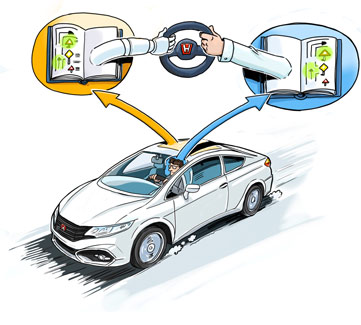This website uses cookies so that we can provide you with the best user experience possible. Cookie information is stored in your browser and performs functions such as recognising you when you return to our website and helping our team to understand which sections of the website you find most interesting and useful.
Privacy Overview
Strictly Necessary Cookies
Show details
Strictly Necessary Cookie should be enabled at all times so that we can save your preferences for cookie settings.
If you disable this cookie, we will not be able to save your preferences. This means that every time you visit this website you will need to enable or disable cookies again.
| Name | Provider | Purpose | Expiration |
|---|---|---|---|
| moove_gdpr_popup | Honda | Storing of user's consent status for cookies on the current domain. | 7 days |
Privacy Policy
More information about our Privacy Policy

 The foundation of Cooperative Behavior is a shared goal between machine and human partner. For a successful, long-term cooperation, the arising relation needs to be fostered and it is crucial to generate mutual understanding. Reaching the goal together is accompanied then by a feeling of accomplishment and joy.
The foundation of Cooperative Behavior is a shared goal between machine and human partner. For a successful, long-term cooperation, the arising relation needs to be fostered and it is crucial to generate mutual understanding. Reaching the goal together is accompanied then by a feeling of accomplishment and joy. A concrete instance of Cooperative Driving is the “CarGesture”. Human drivers use “gestures” frequently to communicate their intentions. For example: approaching a zebra crossing and braking already far away from the crossing conveys the intention to let a waiting pedestrian pass this crossing.
A concrete instance of Cooperative Driving is the “CarGesture”. Human drivers use “gestures” frequently to communicate their intentions. For example: approaching a zebra crossing and braking already far away from the crossing conveys the intention to let a waiting pedestrian pass this crossing.

